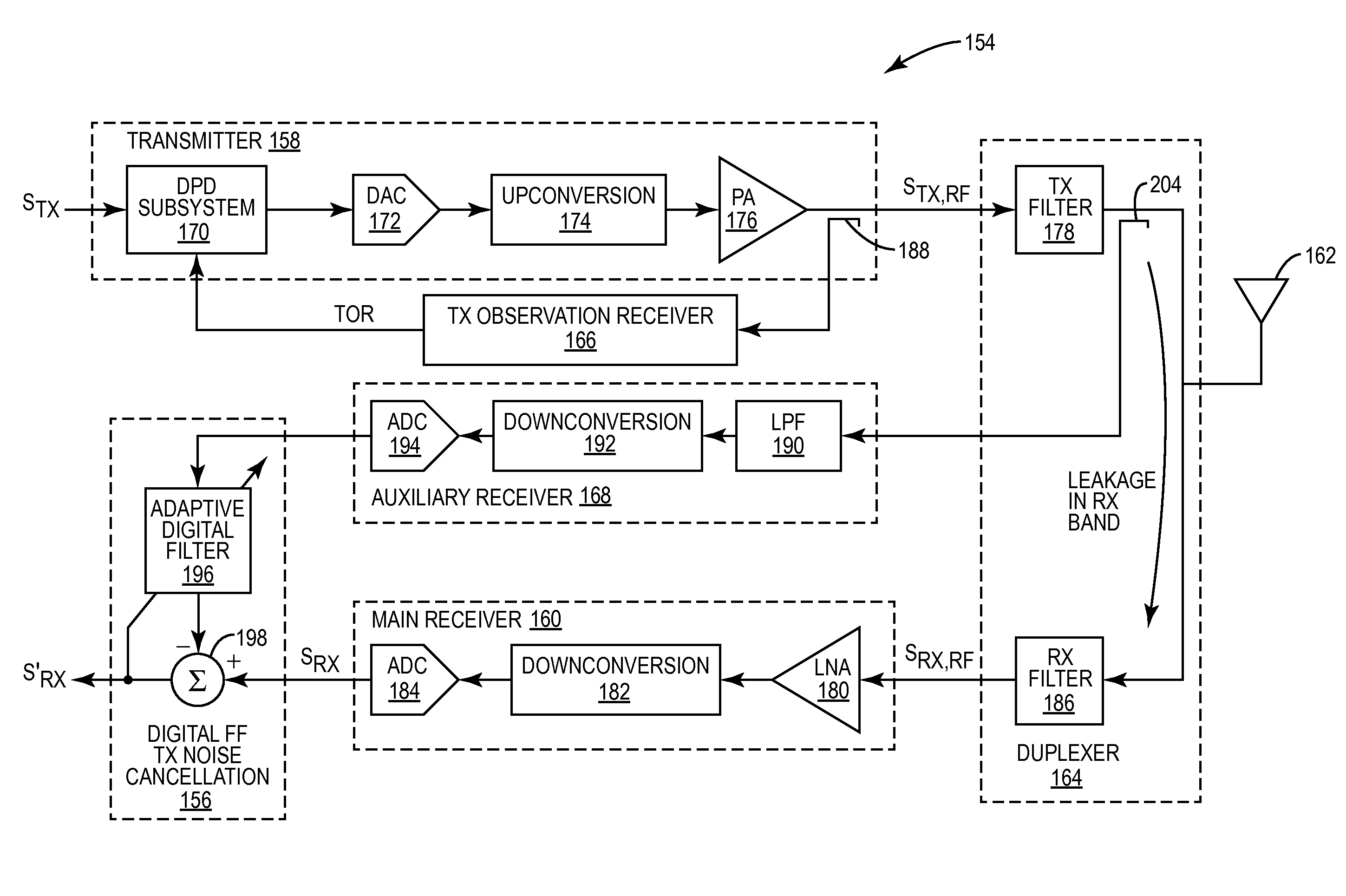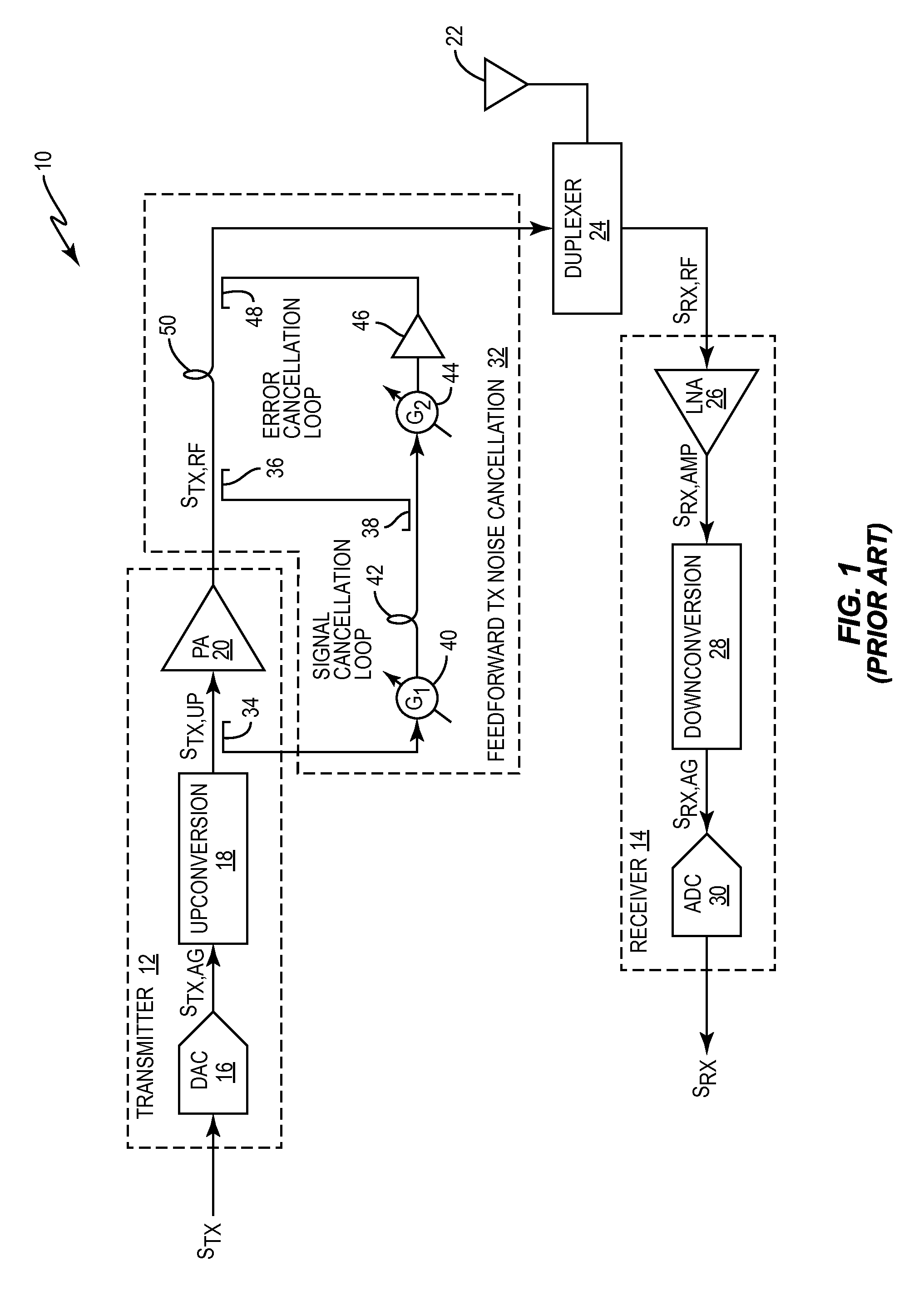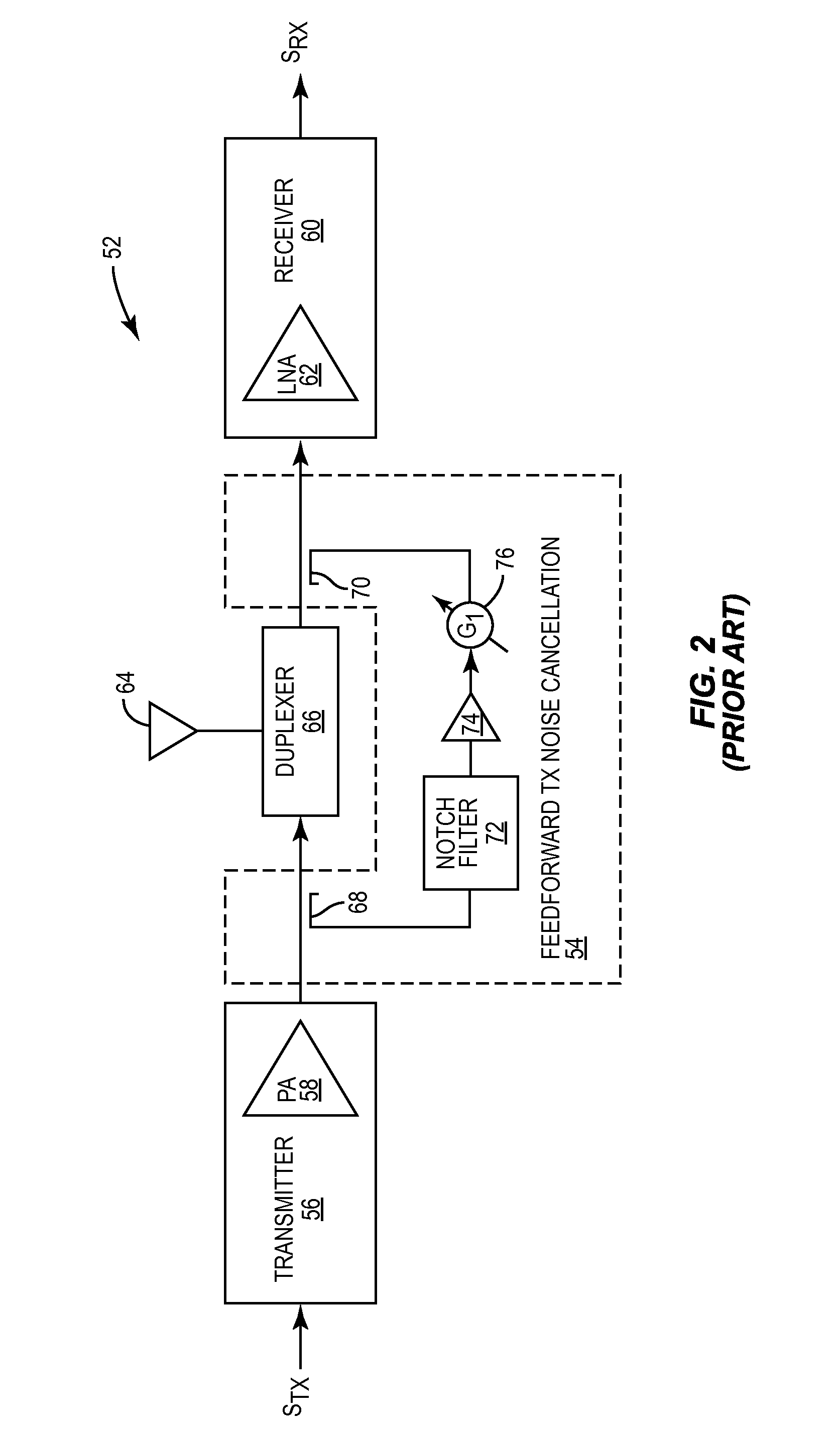Transmitter noise suppression in receiver
a transmitter and receiver technology, applied in the direction of amplitude demodulation, line-faulst/interference reduction, pulse technique, etc., can solve the problems of increasing the number of resonators, increasing the time needed to tune the transmit band filter, and still thermal noise and residual imd in the output of the transmitter. to achieve the effect of suppressing transmitter nois
- Summary
- Abstract
- Description
- Claims
- Application Information
AI Technical Summary
Benefits of technology
Problems solved by technology
Method used
Image
Examples
second embodiment
[0042]FIG. 5 illustrates a communication node 154 that includes a digital feedforward TX noise cancellation subsystem 156 that is suitable for wideband applications according to the present disclosure. This embodiment is similar to that of FIG. 4, but where the digital feedforward signal is generated separately from the feedback signal used to adaptively configure the digital predistortion. The communication node154 is any type of communication device or system such as, for example, a base station in a cellular communications network, a mobile terminal in a cellular communications network, or the like. The communication node 154 includes a transmitter 158 and a main receiver 160 coupled to an antenna 162 via a duplexer 164. The main receiver 160 is referred to herein as being co-located with the transmitter 158. In addition, the communication node 154 includes a TX observation receiver 166, an auxiliary receiver 168, and the digital feedforward TX noise cancellation subsystem 156 co...
third embodiment
[0051]FIG. 6 illustrates the communication node 154 that includes the digital feedforward TX noise cancellation subsystem 156 that is suitable for wideband applications according to the present disclosure. This embodiment is substantially the same as that of FIG. 5. However, in this embodiment, filtering is provided by transmit and receive filters 200 and 202. The transmit and receive filters 200 and 202 may be implemented as a duplexer. The transmit and receive filters 200 and 202 may be, for example, bandpass filters. The transmit filter 200 filters the signal from the coupler 188 to provide a filtered signal that corresponds to the desired signal in the transmit frequency band of the transmitter 158, which is then processed by the TX observation receiver 166. Likewise, the receive filter 202 filters the signal from the coupler 188 to provide a filtered signal that corresponds to the transmitter noise in the receive band, which is then processed by the auxiliary receiver 168.
fourth embodiment
[0052]FIG. 7 illustrates the communication node 154 that includes the digital feedforward TX noise cancellation subsystem 156 that is suitable for wideband applications according to the present disclosure. This embodiment is substantially the same as that of FIG. 5. However, in this embodiment, the input of the auxiliary receiver 168 is connected to a coupler 204 at an output of the transmit filter 178 of the duplexer 164. It should be noted that, in the same manner, the coupler 146 of FIG. 4 may be moved to the output of the transmit filter 132.
PUM
 Login to View More
Login to View More Abstract
Description
Claims
Application Information
 Login to View More
Login to View More - R&D
- Intellectual Property
- Life Sciences
- Materials
- Tech Scout
- Unparalleled Data Quality
- Higher Quality Content
- 60% Fewer Hallucinations
Browse by: Latest US Patents, China's latest patents, Technical Efficacy Thesaurus, Application Domain, Technology Topic, Popular Technical Reports.
© 2025 PatSnap. All rights reserved.Legal|Privacy policy|Modern Slavery Act Transparency Statement|Sitemap|About US| Contact US: help@patsnap.com



